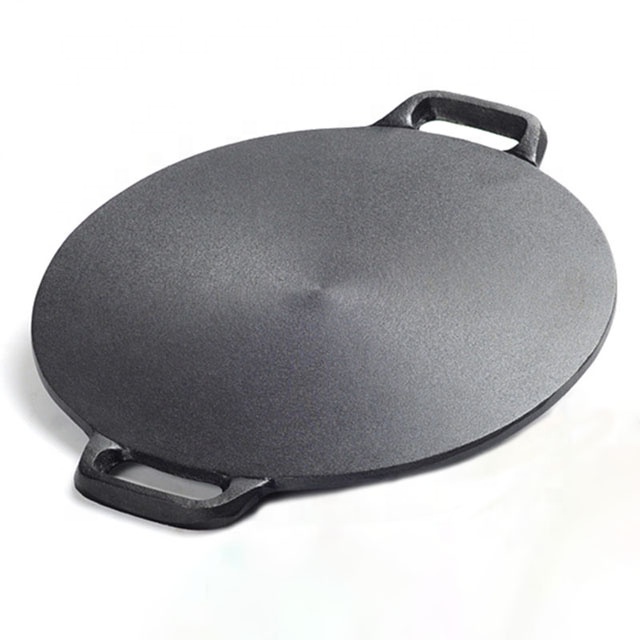
different kinds of woks
Different Kinds of Woks A Culinary Journey
The wok, a versatile cooking vessel that has become a staple in many kitchens around the world, particularly in Asian cuisine, is not just a simple pan. It comes in various shapes, sizes, and materials, each designed for specific cooking techniques. Understanding the different kinds of woks can enhance your cooking experience and allow you to embrace the full potential of this incredible tool.
Traditional Chinese Woks
At the heart of wok cooking lies the traditional Chinese wok, often made from carbon steel. This type of wok is prized for its ability to conduct and distribute heat evenly, allowing for high-temperature cooking methods such as stir-frying, searing, and steaming. Carbon steel woks typically come in two shapes round-bottomed and flat-bottomed. Round-bottomed woks are ideal for use over a gas stove, offering excellent heat circulation and making it easier to toss ingredients. Flat-bottomed woks, on the other hand, are more versatile for use on electric or induction cooktops.
Non-Stick Woks
Non-stick woks have gained immense popularity in modern kitchens due to their ease of use and cleanup. Usually made from aluminum with a non-stick coating, these woks allow food to slide out easily, reducing the amount of oil needed while cooking. This makes them particularly appealing for health-conscious cooks. However, it's important to note that non-stick coatings can wear off over time and may not withstand high cooking temperatures as well as their carbon steel counterparts. For gentle cooking methods, though, non-stick woks are a fantastic option.
Cast Iron Woks
different kinds of woks

Cast iron woks are another excellent choice, celebrated for their heat retention and durability. These heavy-duty woks are excellent for high-heat cooking and can often be used for oven cooking, making them a versatile addition to any kitchen. Cast iron woks require a bit more maintenance, as they need to be seasoned to prevent rusting and to maintain their non-stick properties. Despite this, many chefs swear by them for their ability to develop a beautiful sear on meats and vegetables.
Electric Woks
Electric woks have emerged as a convenient alternative for those who may not have access to a gas stove. Equipped with an electric heating element, these woks provide consistent heat and often come with adjustable temperature settings. This makes them particularly useful for stir-frying or steaming food without the need for a stovetop. However, their size and shape can limit cooking versatility when compared to traditional woks.
Specialty Woks
Beyond the standard options, there are also specialty woks designed for specific cooking methods. For example, a paella pan, which resembles a wok but is wider and shallower, is ideal for making paella, whereas a Japanese teppanyaki grill, though not a traditional wok, shares its premise of cooking at high heat and can serve similar purposes in preparing a variety of dishes.
Conclusion
Selecting the right type of wok can transform your culinary endeavors, whether you're whipping up a quick stir-fry, steaming dumplings, or searing meat. Understanding the different kinds of woks—traditional carbon steel, non-stick options, robust cast iron, electric varieties, and specialty designs—allows you to choose the best one for your cooking style and needs. As you embark on your culinary journey, remember that each type of wok brings unique characteristics to the table, making it an essential tool for any kitchen. Embrace these different kinds, experiment with their capabilities, and enjoy the delightful world of cooking that they open up. Whether you're preparing a quick weeknight meal or an elaborate feast, having the right wok can make all the difference. Happy cooking!
-
Season Cast Iron Perfectly with GPT-4 Turbo TipsNewsAug.01,2025
-
High Quality Cast Iron Cookware - Baixiang County Zhongda MachineryNewsAug.01,2025
-
Premium Cast Iron Pan: Durable & Perfect HeatNewsAug.01,2025
-
High Quality Kitchen Durable Black Round Cast Iron Cookware Pancake Crepe Pan-Baixiang County Zhongda Machinery Manufacturing Co., Ltd.NewsAug.01,2025
-
Cast Iron Cookware - Baixiang County Zhongda Machinery | Nonstick, Heat ResistanceNewsAug.01,2025
-
High Quality Kitchen Durable Black Round Cast Iron Cookware - Baixiang County Zhongda Machinery | Non-Stick, Heat Retention, DurableNewsJul.31,2025


